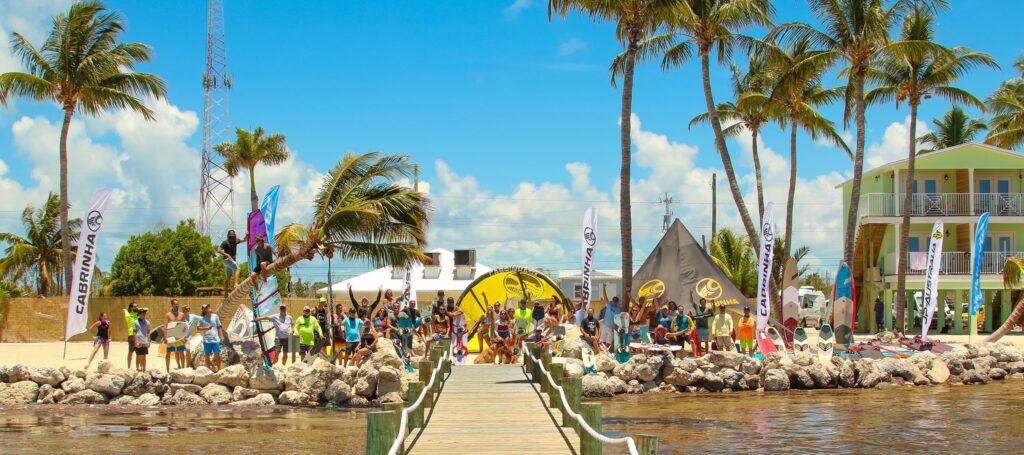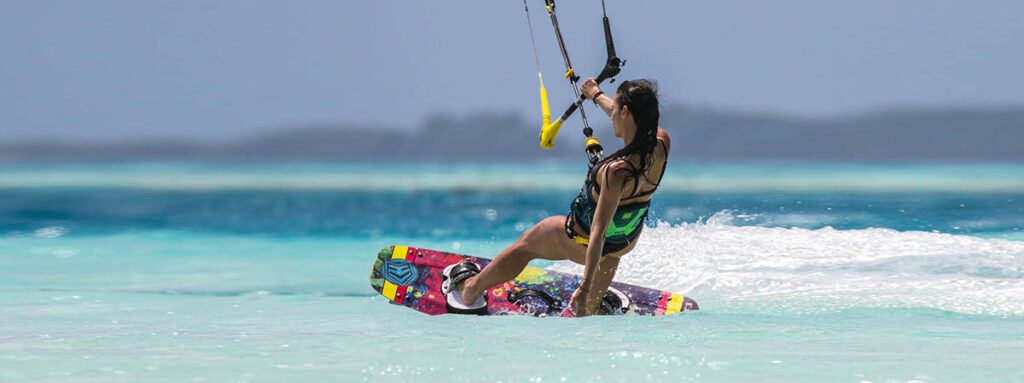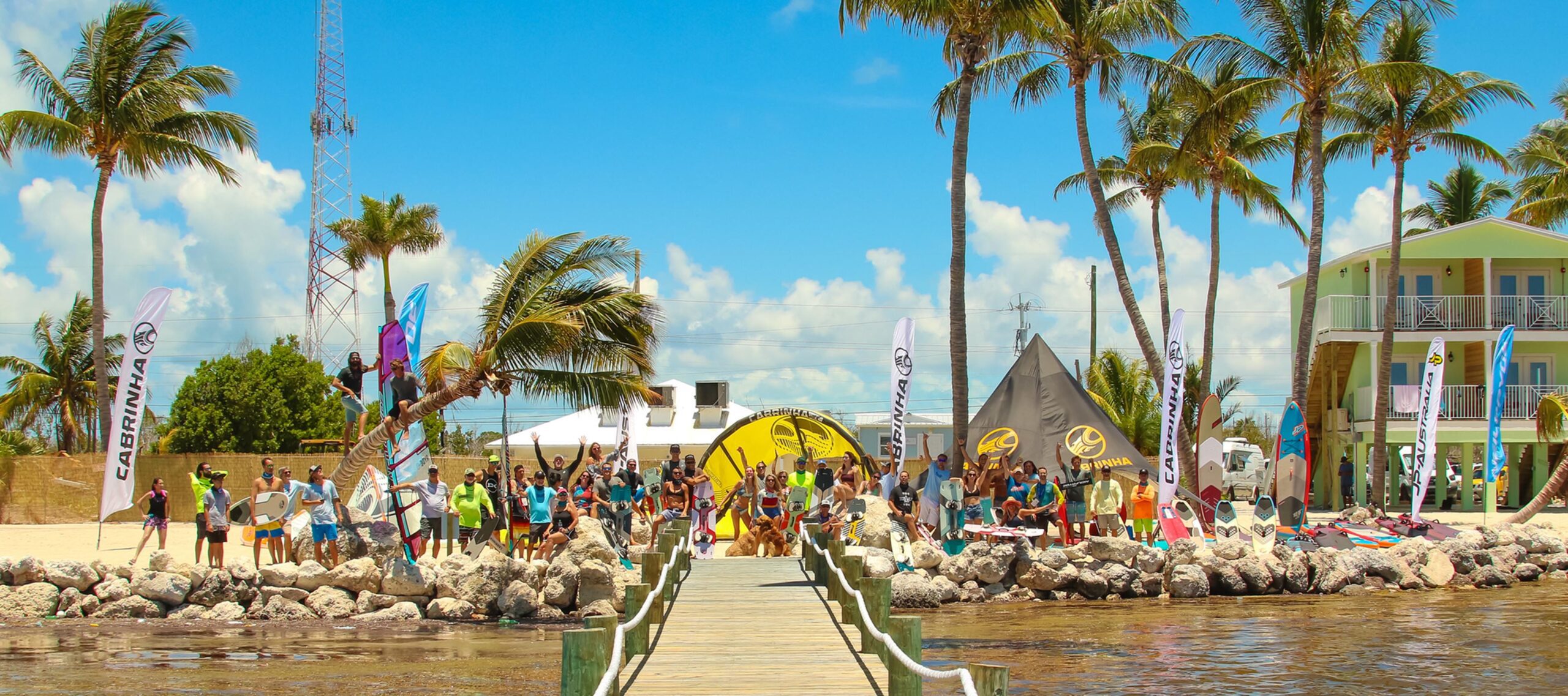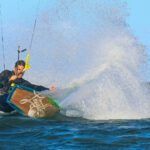
Kitesurfing Creator: Who Was the Creator of Kitesurfing?
Introduction.
Kitesurfing Creator, also known as kiteboarding, is a thrilling water sport that combines elements of surfing, wakeboarding, and paragliding. It involves riding a board while being pulled by a kite attached to a harness propelled by the wind. But do you know who the creator of Kitesurfing was?
History.
The concept of Kitesurfing can be traced back to October 1977 when Gijsbertus Adrianus Panhuise obtained the first patent for this sport. Panhuise’s patent described the need for a surfboard to be pulled by a “parachute” and connected by a harness, which the wind would propel. This patent marked the beginning of Kitesurfing as a recognized sport.
Evolution.
Since the invention of kitesurfing by Panhuise, the sport has evolved significantly over the years. The equipment used in Kitesurfing has undergone numerous developments, with advancements in kite designs, board shapes, and safety features. With growing interested and participation, Kitesurfing has become more accessible and popularized around the world.
Who Has Shaped the Development of Kitesurfing?
Kitesurfing, also known as kiteboarding, has seen significant contributions from various personalities who have played pivotal roles in shaping the sport. These individuals have brought their innovation, expertise, and passion to Kitesurfing, driving its growth and development as a popular water adventure. Here are some notable personalities who have influenced the development of Kitesurfing:
- Gijsbertus Adrianus Panhuise: Often regarded as the “father of kitesurfing,” Gijsbertus Adrianus Panhuise obtained the first patent for the sport in October 1977. His patent described a surfboard attached to a “parachute” by a harness propelled by the wind, laying the groundwork for modern Kitesurfing.
- Cory Roeseler: Cory Roeseler, a professional windsurfer and kitesurfer made significant contributions to the development of kitesurfing in the early years. He played a crucial role in refining kite designs, safety systems, and riding techniques, and his innovative approach greatly influenced the sport’s growth.
- Robby Naish: Robby Naish, a legendary windsurfer and water sports pioneer, has also significantly impacted the development of Kitesurfing. Naish embraced kitesurfing early on and used his expertise in windsurfing to influence kiteboarding techniques, equipment design, and safety practices, helping to establish kitesurfing as a legitimate water sport.
- Dimitri Maramenides: Dimitri Maramenides, a professional kitesurfer, and entrepreneur, has made significant contributions to the development of kitesurfing through his innovative kite designs and riding techniques. He is known for pushing the boundaries of what is possible on the water, showcasing the sport’s potential for extreme tricks and maneuvers.
- Susi Mai: Susi Mai, a professional kitesurfer and influential female figure in the sport, has played a crucial role in advancing Kitesurfing’s development. As an advocate for women in Kitesurfing, she has raised awareness about gender equality in the sport and has inspired many female kitesurfers worldwide.
- Pete Cabrinha: Pete Cabrinha, a renowned water sports athlete and kite designer has made significant contributions to the development of kitesurfing through his innovative kite designs and riding techniques. His brand, Cabrinha Kites, has been at the forefront of kiteboarding technology, pushing the boundaries of performance and safety.
- Richard Branson: Richard Branson, the founder of the Virgin Group, has also played a role in developing Kitesurfing. He has advocated for extreme sports and supported kitesurfing events, competitions, and athletes, raising awareness and promoting the sport’s growth.
How it Works.
Kitesurfing involves several key components, including the kite, the board, and the harness. The kite, attached to the saddle, is controlled by the rider using a control bar. By manipulating the control bar, the rider can control the direction and speed of the kite, allowing them to glide through the water or perform aerial tricks. The board is used for balance and steering, and the rider stands on it while holding the control bar. Kitesurfing requires a combination of physical skills, such as balance, coordination, strength, and knowledge of wind patterns and weather conditions.

Safety.
Safety is paramount in Kitesurfing, as it is an extreme sport involving potential risks. Proper training, supervision, and adherence to safety guidelines are crucial to minimizing the risks associated with Kitesurfing.
Benefits.
Despite the inherent risks, Kitesurfing offers a plethora of benefits. Kitesurfing can be a rewarding and stimulating experience for physical to mental health. The physical demands of the sport provide an excellent workout, engaging muscles throughout the body and improving cardiovascular fitness. Moreover, the adrenaline rush and excitement of riding the waves and performing aerial maneuvers can boost mental well-being, reduce stress, and increase self-confidence.
Challenges.
Kitesurfing also comes with its fair share of challenges. One of the significant challenges is mastering the skills required to control the kite and the board simultaneously. Developing the necessary coordination and balance takes time and practice, and beginners may face a steep learning curve. Additionally, unpredictable weather conditions, such as strong winds or sudden gusts, can pose challenges and require quick decision-making to ensure safety.
Success Stories.
Over the years, there have been notable success stories in Kitesurfing. Professional kitesurfers have achieved remarkable feats, from breaking world records to winning international competitions. These success stories serve as inspiration to aspiring kitesurfers, showcasing the possibilities and potential of the sport. They also highlight the dedication, perseverance, and skill required to excel in Kitesurfing.
Community.
Kitesurfing has a vibrant and supportive community of enthusiasts around the world. From local clubs to international events, the kitesurfing community offers socializing, networking, and learning opportunities from fellow riders. Events and competitions provide a platform for kitesurfers to showcase their skills, exchange tips and tricks, and foster a sense of camaraderie among fellow riders.
Popular Destinations.
Kitesurfing can be enjoyed in various locations worldwide, with some places gaining popularity as kitesurfing hotspots. Destinations such as Tarifa in Spain, Maui in Hawaii, and Cape Town in South Africa are renowned for their favorable wind conditions, stunning scenery, and vibrant kitesurfing scenes. Wind strength, water conditions, and accessibility make these destinations appealing to kitesurfers seeking new adventures.
Sustainability.
As with any outdoor activity, sustainability is crucial in Kitesurfing. Kitesurfers must be mindful of their environmental impact and follow sustainable practices. This includes respecting local regulations, avoiding sensitive ecological areas, properly disposing of waste, and promoting environmental conservation. By adopting sustainable practices, kitesurfers can contribute to preserving natural resources and protecting marine ecosystems.
Conclusion.
Kitesurfing, pioneered by Gijsbertus Adrianus Panhuise in 1977, has come a long way since its inception. It has evolved into a thrilling and popular water sport, offering adventure, athleticism, and camaraderie. While it comes with its challenges and risks, the benefits and joys of Kitesurfing are undeniable. From physical fitness to mental well-being, community connections to global competitions, Kitesurfing has captured the hearts and minds of countless enthusiasts worldwide.
FAQs.
- Is kitesurfing dangerous? Kitesurfing can only be accessible if proper safety precautions are followed. It involves potential risks such as strong winds, sudden gusts, and collisions. However, the risks can be minimized with appropriate training, supervision, and adherence to safety guidelines.
- Can anyone learn Kitesurfing? Yes, anyone can learn kitesurfing with the proper training and practice. However, it requires physical skills, coordination, and knowledge of wind patterns and weather conditions. Beginners may face a learning curve and should start with professional instruction.
- Do I need to be a strong swimmer to kitesurf?
While being sure to have basic swimming skills is recommended for any water sport, including Kitesurfing, it is not necessarily a requirement to be a strong swimmer. Kitesurfing typically takes place in shallow water close to the shore, and using safety gear such as a harness and life jacket can provide additional safety measures. However, being comfortable in the water and having some swimming ability can be beneficial in unexpected situations.
- What equipment do I need for Kitesurfing? Kitesurfing requires specific equipment, including a kite, a control bar, lines, and a harness. Riders also need a board, which can be a twin-tip or a directional board, depending on their riding style. Safety gear such as a leash, a life jacket, and a helmet is essential for ensuring safety while kitesurfing.
- How long does it take to learn Kitesurfing? The time it takes to learn Kitesurfing can vary depending on individual learning abilities and prior experience with similar sports. With proper instruction and practice, beginners can start riding the water within a few hours of training. However, mastering the skills and becoming proficient in Kitesurfing may take several weeks or months of consistent practice.
- Are there any age restrictions for Kitesurfing? People of various ages can enjoy kitesurfing, but it may require a certain level of physical strength and coordination. Some kitesurfing schools or instructors may have age restrictions for safety reasons, and it’s essential to check with local regulations and guidelines. It’s recommended to start kitesurfing at a younger age with proper supervision and safety measures in place.
- How can I ensure safety while kitesurfing? Ensuring security while Kitesurfing is crucial. It includes taking lessons from a certified instructor, using appropriate safety gear, following local regulations and guidelines, being aware of weather conditions, and practicing good judgment. Regularly checking and maintaining the equipment, knowing how to self-rescue, and being mindful of other water users are also crucial for safe Kitesurfing.
- Is kitesurfing an eco-friendly sport? Kitesurfing, like any other outdoor sport, has the potential to impact the environment. However, with proper environmental awareness and responsible practices, Kitesurfing can be made more sustainable. This includes respecting local regulations, avoiding sensitive ecological areas, properly disposing of waste, and promoting environmental conservation. Kitesurfers must be mindful of their environmental impact and strive to minimize their footprint.
In conclusion, Kitesurfing is an exciting and dynamic water sport that offers a unique blend of physical activity, mental exhilaration, and community connections. While it comes with challenges and risks, proper training, safety precautions, and responsible practices can help ensure a safe and enjoyable kitesurfing experience. With its growing popularity and global community, Kitesurfing continues to captivate the hearts and minds of enthusiasts worldwide.
Author
Latest entries
 WatersportsSeptember 16, 2024Cabrinha Moto X: Enjoy the Ride
WatersportsSeptember 16, 2024Cabrinha Moto X: Enjoy the Ride WatersportsMay 19, 2024Cabrinha 2024 Moto XL Review: The Ultimate Lightwind Kite
WatersportsMay 19, 2024Cabrinha 2024 Moto XL Review: The Ultimate Lightwind Kite WatersportsDecember 16, 2023Kiteboarding Travel
WatersportsDecember 16, 2023Kiteboarding Travel WatersportsDecember 14, 2023RED BULL KING OF THE AIR 2023
WatersportsDecember 14, 2023RED BULL KING OF THE AIR 2023




